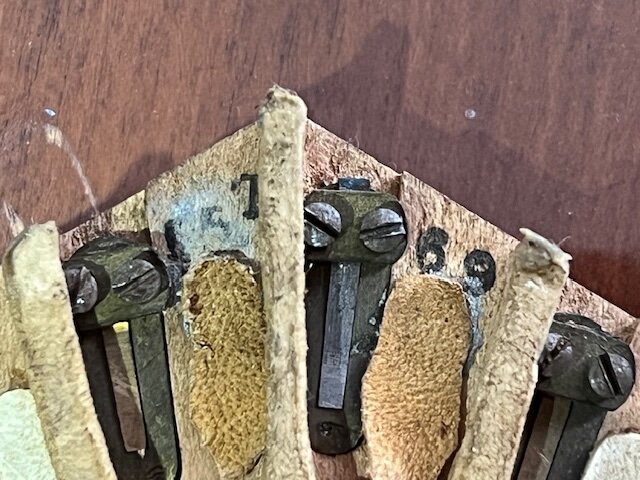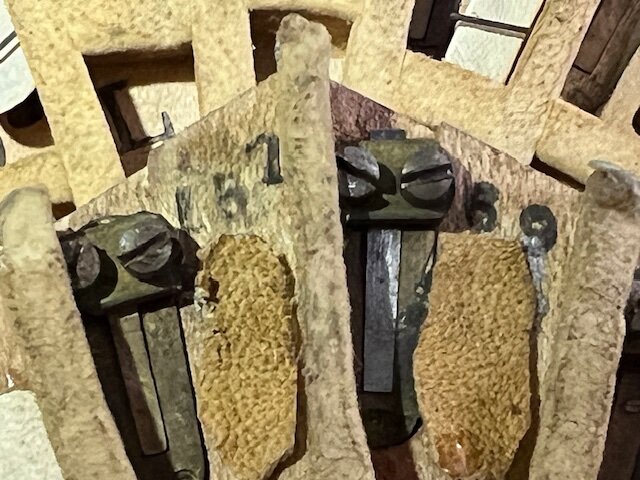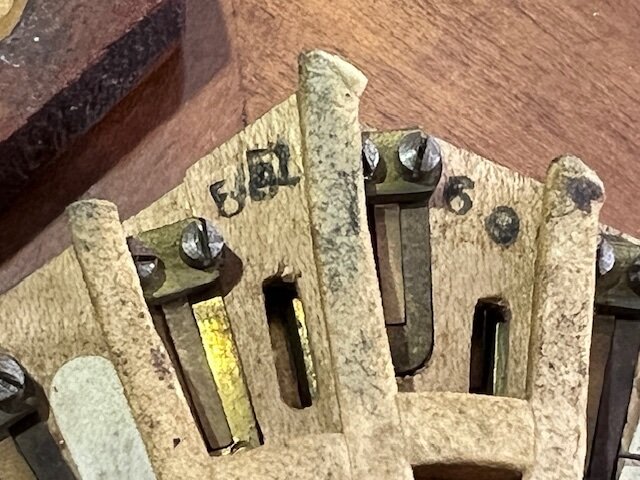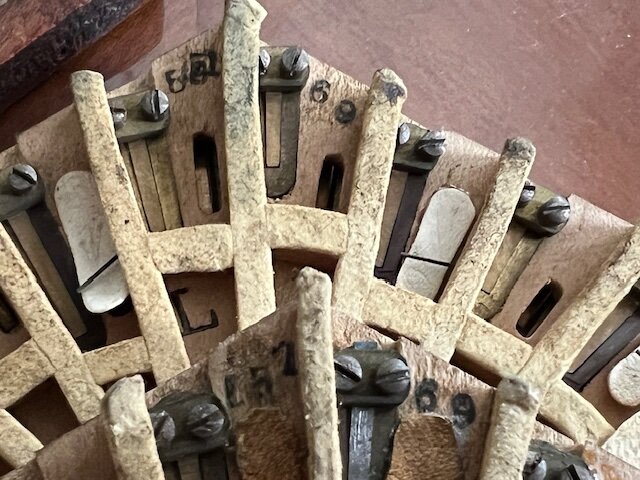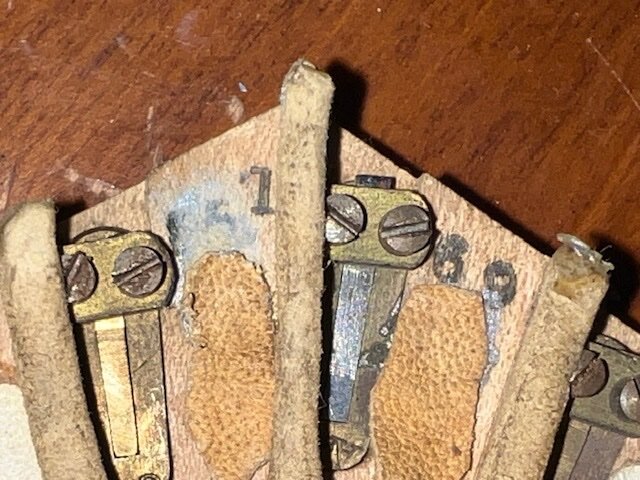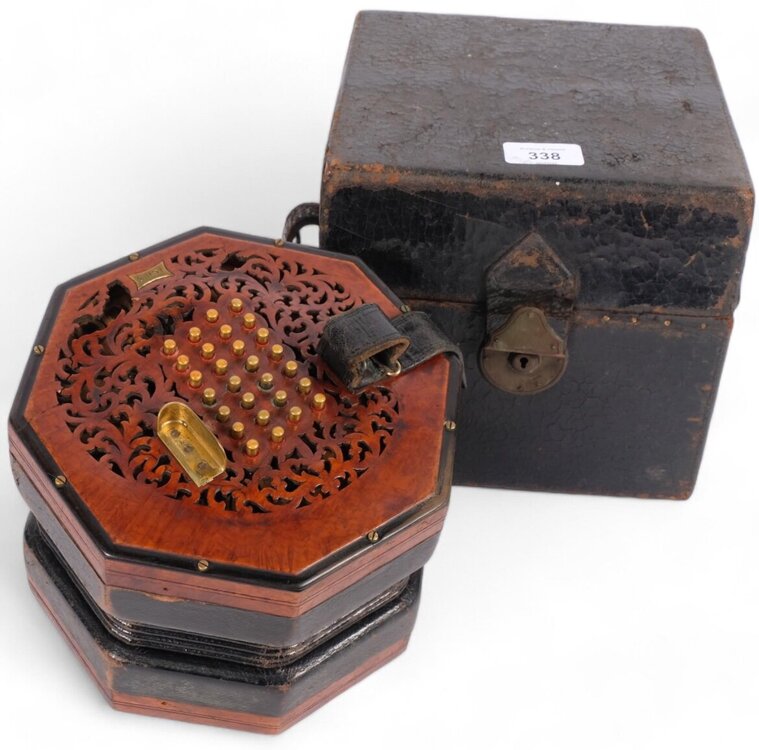-
Posts
229 -
Joined
Profile Information
-
Gender
Male
-
Interests
Music, RC helicopters, building and repairing stringed instruments... repairing my own concertinas...
Recent Profile Visitors
2,852 profile views
4to5to6's Achievements

Chatty concertinist (4/6)
-
4to5to6 started following Wanted: Wheatstone Maccann 67-72 Duet Concertina , Wheatstone Aeola Baritone For Sale , Wanted: English with riveted reeds and 3 others
-
Wow! Very nice!
-
I have one of these riveted reed instruments. It is a Cramer Co., Richard Blagrove Select. It is fully playable as I recall but in old high pitch and basically unrestored. Not sure if I want to part with it as I am a huge Blagrove fan but if you really want or need it then I will let it go. Why the interest in such an old instrument? Here's a similar one in the Concertina Museum: The Concertina Museum Collection Ref:C-269.
-
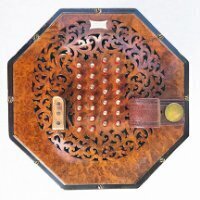
Dating A Lachenal From The Serial Number
4to5to6 replied to johnconstable's topic in Concertina History
Please see attached photos… Is this 15769 or perhaps 55769? It is an early Lachenal treble that was modified with carved bone ends. It would be nice to know the serial and date. There are no other serial numbers except these two in the reed pans. -

Dating A Lachenal From The Serial Number
4to5to6 replied to johnconstable's topic in Concertina History
Thank you Wes! . -

Dating A Lachenal From The Serial Number
4to5to6 replied to johnconstable's topic in Concertina History
Can you please give me the approx date for Lachenal 184566, 20 button Anglo? It’s in very nice condition with the original leather baffles still installed (therefore makers badge and serial). In spite of all my efforts, two end bolts broke on disassembly but I can easily replace these. I really don’t think this concertina has been taken apart in 100 years!!! -
Yes. The ledger photo in the first post says “gilt fittings”. They are gold plated brass.
-
Wow! Someone did take a risk. Let’s hope it turns out to be a fine instrument. I can’t find the list now, but I went through all the ledgers before purchasing my 31xxx golden era amboyna model 19 TT and there were less than 40 made as I recall. The instrument cost me an arm and a leg but I do believe along with others that it could be one of the finest vintage concertinas in existence. It was well taken care of for its entire life based on its very clean condition and then meticulously restored and tweaked by a few of the best of the best including Steve Dickinson. I also have an exceptional 1856 Regondi / Blagrove era treble previously owned by the Bulteel family (Lord Revelstoke) and an Aeola treble built in 1942 during WWII (factory A440 with a factory 8-fold bellows) that is an exceptionally fine instrument with amazing reeds but they too are in absolutely pristine clean condition almost as new. They started out as top tier instruments and were always taken care over. .
-

How many concertinas have you owned/tried?
4to5to6 replied to LR71's topic in General Concertina Discussion
Probably owned between 20 and 30 over the years and have tried another 20 maybe in search for the perfect tone. I now would like to only play my prefered 31xxx amboyna Aeola TT to really know the feel of it well but I am often repairing or restoring an instrument that needs to be “played in and will switch to playing it full time until done. Best to stick to just one instrument and specialize in it. It’s okay to have a backup of course… I do have a Regondi era EC owned by the Bulteel family that is absolutely amazing at quite parlour music and a model 22 EC with short stroke buttons for fast playing that will peel the wall paper off the wall it is so loud so I understand the interest in multiple instruments…. I think it’s called G.A.S. (Gear Accusation Syndrome). . -
The Saleroom, Lot 338 https://www.the-saleroom.com/en-gb/auction-catalogues/burstow-and-hewett/catalogue-id-srburs10468/lot-b3ef5a74-e0fd-48fd-9c9e-b14900b82bc8?utm_source=auction-alert&utm_medium=email&utm_campaign=auction-alert&utm_content=lot-view-link&queryId=d1b7df1b61eae4d40d6fbe74e9b2418e C. WHEATSTONE & CO - a Victorian concertina manufactured by The Wheatstone & Co of London, serial no. 25191, pierced walnut casing, in original hardshell box, label inside reads C Wheatstone & Co It needs work. A diamond in the rough
-
Wow!
-
I have a 72 button McCann Aeola that I haven't used in many years. I've been keeping it as it is on the same ledger page as my Tenor Treble English. I can part with it if your son needs it. Metal ends replated, good bellows and tuned to A440, goes down to a low F# and built in 1919 as I recall. Where are you located? PM me your email address and I'll pull it out and send you a few photos.
-
Hi Derek, Where are you located?
-
Ok. Fair enough… I thought that the underlying discussion was really about musical expression in general. It’s really not my nature to be so blunt…. My apologies… This is a sensitive topic. It is a comparison between two entire types of concertinas and two entire groups of players. How do you answer a critical question on why someone does NOT do something. It’s like asking “Why doesn’t Jonny make his bed?” These are loaded questions. And besides, I did give a number of examples like Danny and Simon that use bellows changes extensively as well as some pieces I play that extensively use bellows changes. I practice scales using bellows changes on every note. The fact is that a very disciplined and well studied English concertina musician will use a lot of bellows changes as expression and everything else they can at their disposal. Why wouldn’t they? Music is expression as I explained in great detail previously. You only have the bellows and buttons. The short coming of the concertina, in general as an instrument, is the lack of balance when you play two notes (specifically treble and bass notes) that are far apart. I do believe the advantages outweigh this disadvantage or I would play the concertina. The beauty of the English Concertina is that you don’t have to make the bellows changes if you don’t want to. Like Leah said, “I’d be excited to change bellows whenever I wanted”. However, if you are lazy, you can choose not to on the EC. Unlike with an Anglo Concertina where you must make these changes. I’ve yet to see an Anglo player do cross row fingering legato. The beauty of the EC is that you have the choice as Leah stated. What if I started a post asking “Why don’t Anglo Concertina musicians play legato or smoother? Would not the answer be the same? Or (fighting words) is it not possible? People can be lazy. It’s harder to use the bellows on the EC to make “bombastic percussive expressive” passages just as it is hard to play legato passages on the Anglo. .


.thumb.jpeg.09943e9e2f2a23918324c6151aa2597b.jpeg)





